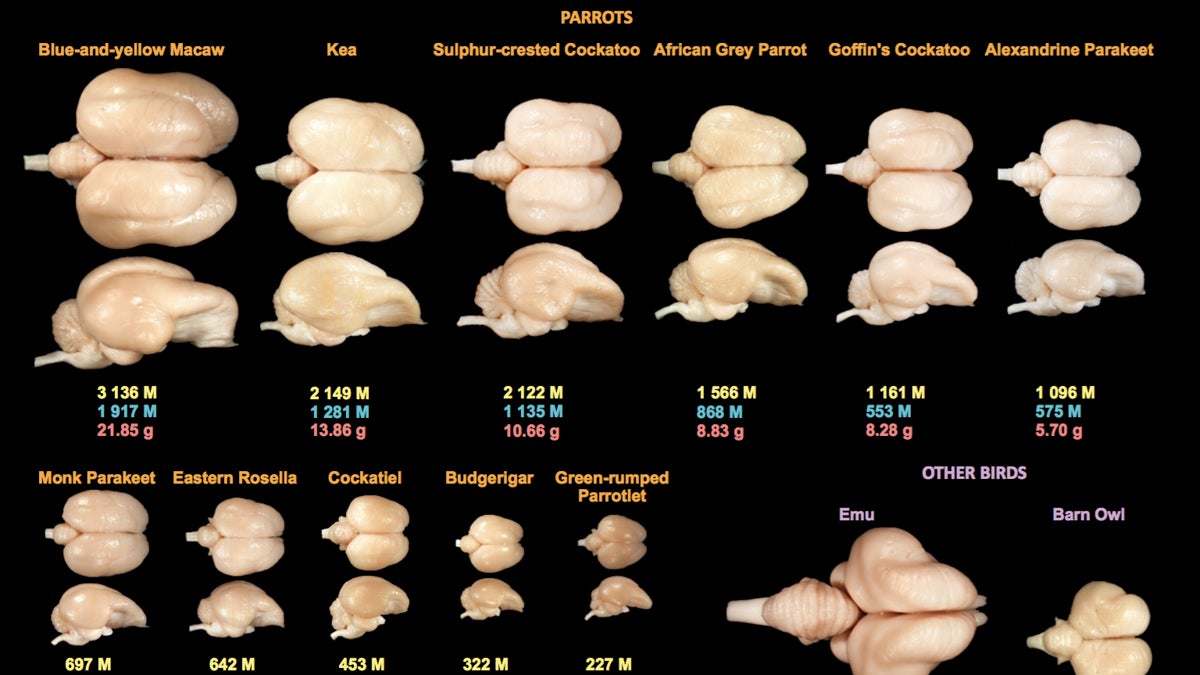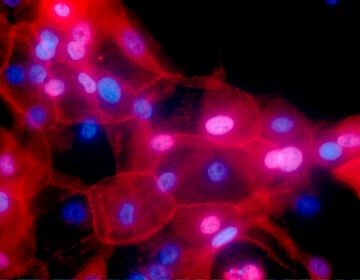One scientist is creating ‘brain soup’ to calculate brain power

Suzana Herculano-Houzel dissolved these bird brains into "soup" to count the number of neurons they contained. The three numbers below each brain represent, from top to bottom, the total number of neurons in the brain, the number of neurons in the forebrain, and the brain's total mass (neuron counts in millions). (Courtesy of Vanderbilt University.)
Research suggests that bird brains are small but mighty, so don’t judge a brain by its size.
Don’t judge a brain by its size.
That’s one of the lessons Suzana Herculano-Houzel takes away from her research on bird brains. The Vanderbilt University neuroscientist has found that despite their small size, some birds have more neurons in their relatively tiny brains than many mammals–including our primate cousins.
Take the pigeon, for example.
“They’re considered plague, they’re considered dumb animals,” Herculano-Houzel tells The Pulse. “It turns out they actually have more neurons in the forebrain than rats,” she says.
The forebrain, she explains, is the part of the brain associated with “complexity and flexibility” of cognition and behavior–what we might call intelligence.
Herculano-Houzel says her findings may help explain some of the impressive abilities of birds like parrots and crows.
“These birds are animals that can do a lot of very sophisticated processing,” she says. “They can do a number of things that primates do, essentially, and all of that with brains that are a third or a fourth the size of a primate brain.”
Her research offers proof that these birds are able to fit more neurons in a smaller space, showing that brain size is not necessarily reflective of brain power.
“Neurons are the basic information processing units in the brain,” says Herculano-Houzel. “That’s why it’s reasonable to expect that the more neurons you have in the brain, the more capabilities that brain will have.”
Science has yet to establish that having more neurons is synonymous with higher intelligence, but Herculano-Houzel says that research suggests it’s probably a key factor.
Coming up with an accurate count of the neurons in a brain was a feat in itself. Herculano-Houzel’s creative solution is not for the squeamish.
“We turned those brains into soup,” she says.
She uses a common laboratory detergent to dissolve the cell membranes in brain tissue, leaving behind just the nucleus of each cell. The nuclei can then be counted up to generate an estimate of the number of cells that were in the tissue. She says it’s an improvement on the usual method of counting neurons by examining sample slices of brain under a microscope, because neurons aren’t evenly distributed across different parts of the brain.
The recipe calls for grinding the brains in a glass tube that acts like the laboratory version of a mortar and pestle.
“You toss the tissue in, add some salty detergent solution, and then you just work at it for some 15… 20 minutes,” says Herculano-Houzel. “Then you have brain soup.”
Bon appetit.
WHYY is your source for fact-based, in-depth journalism and information. As a nonprofit organization, we rely on financial support from readers like you. Please give today.







